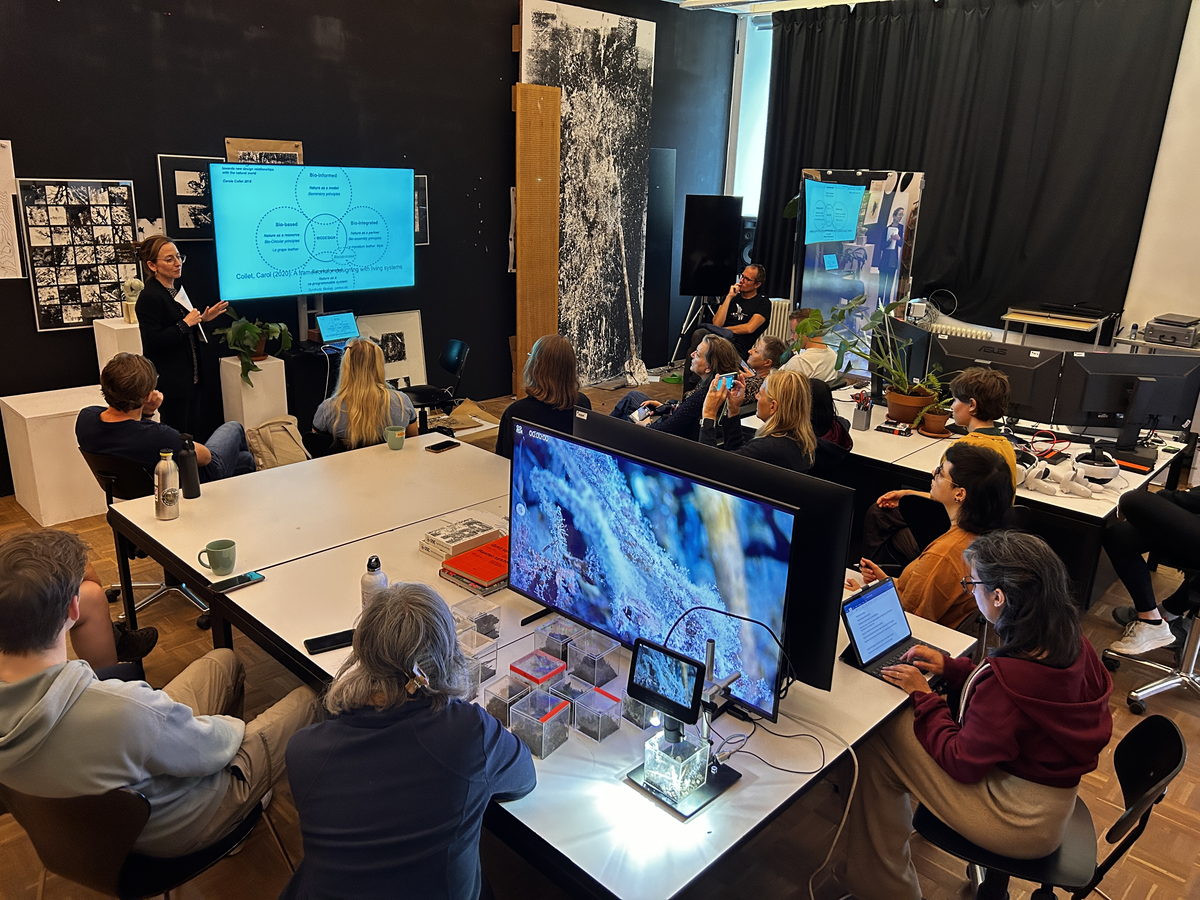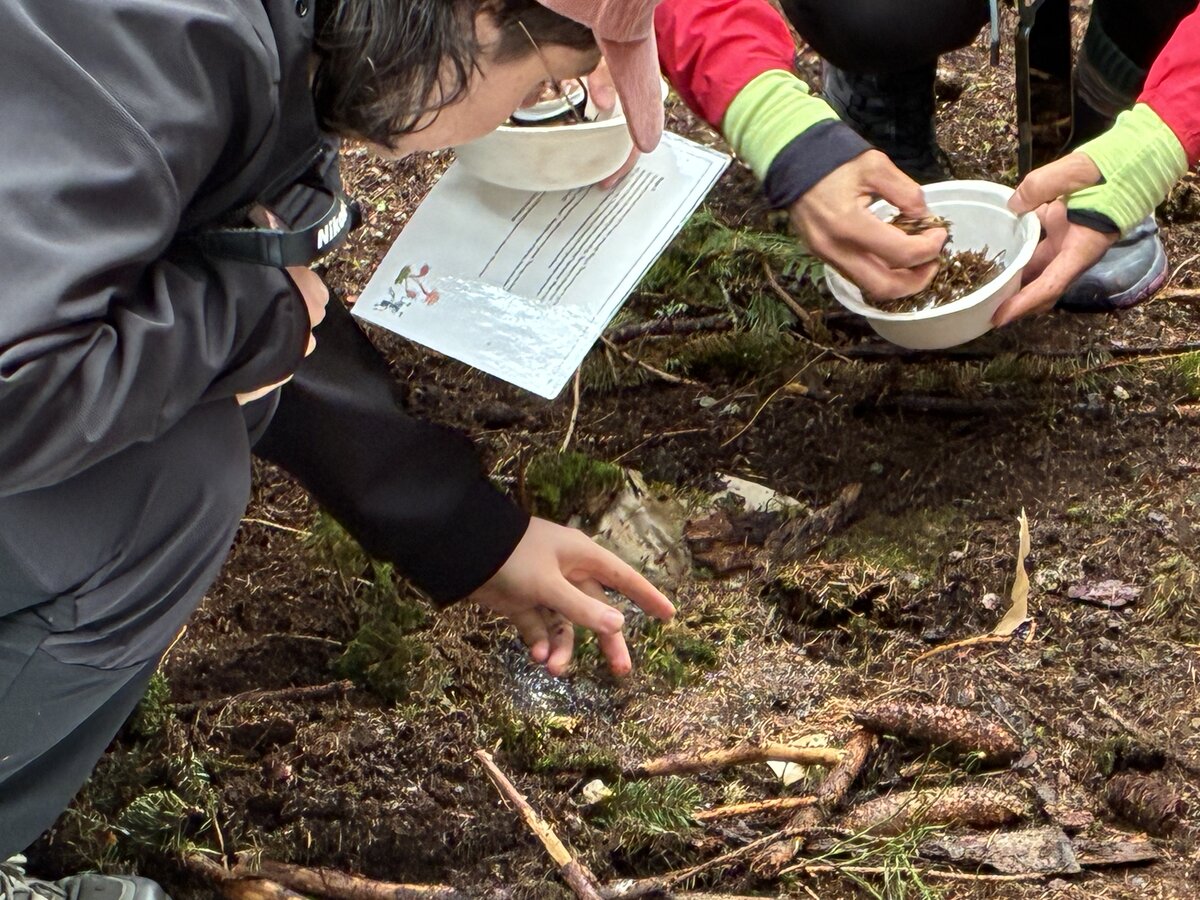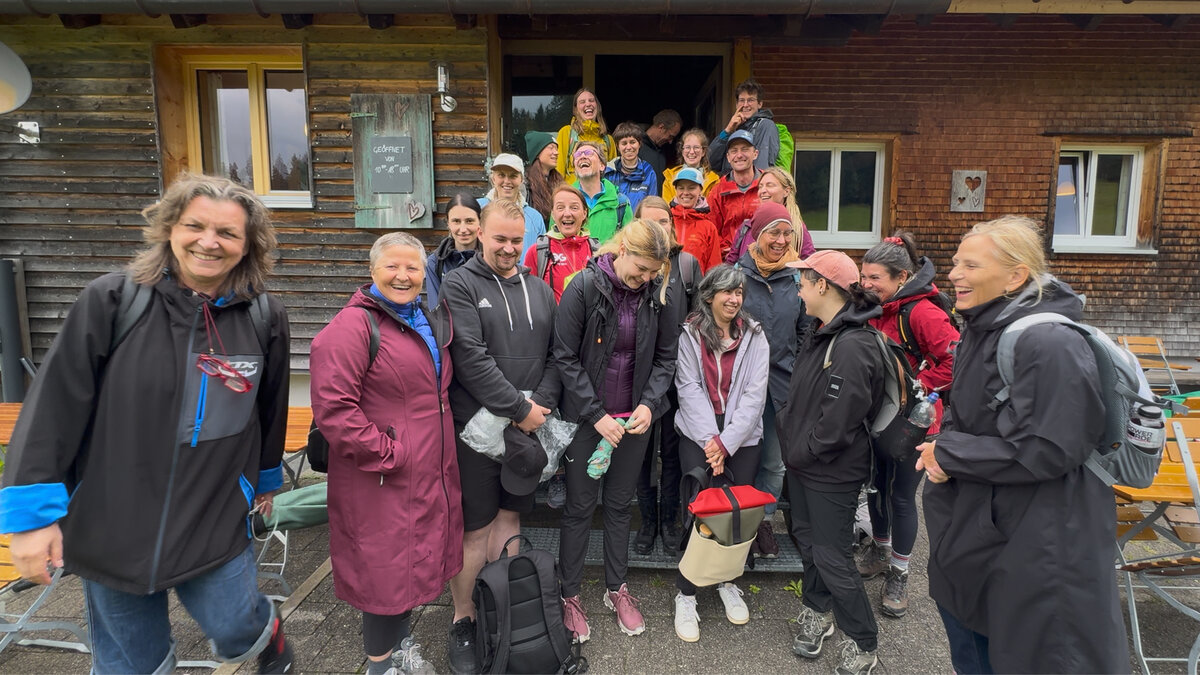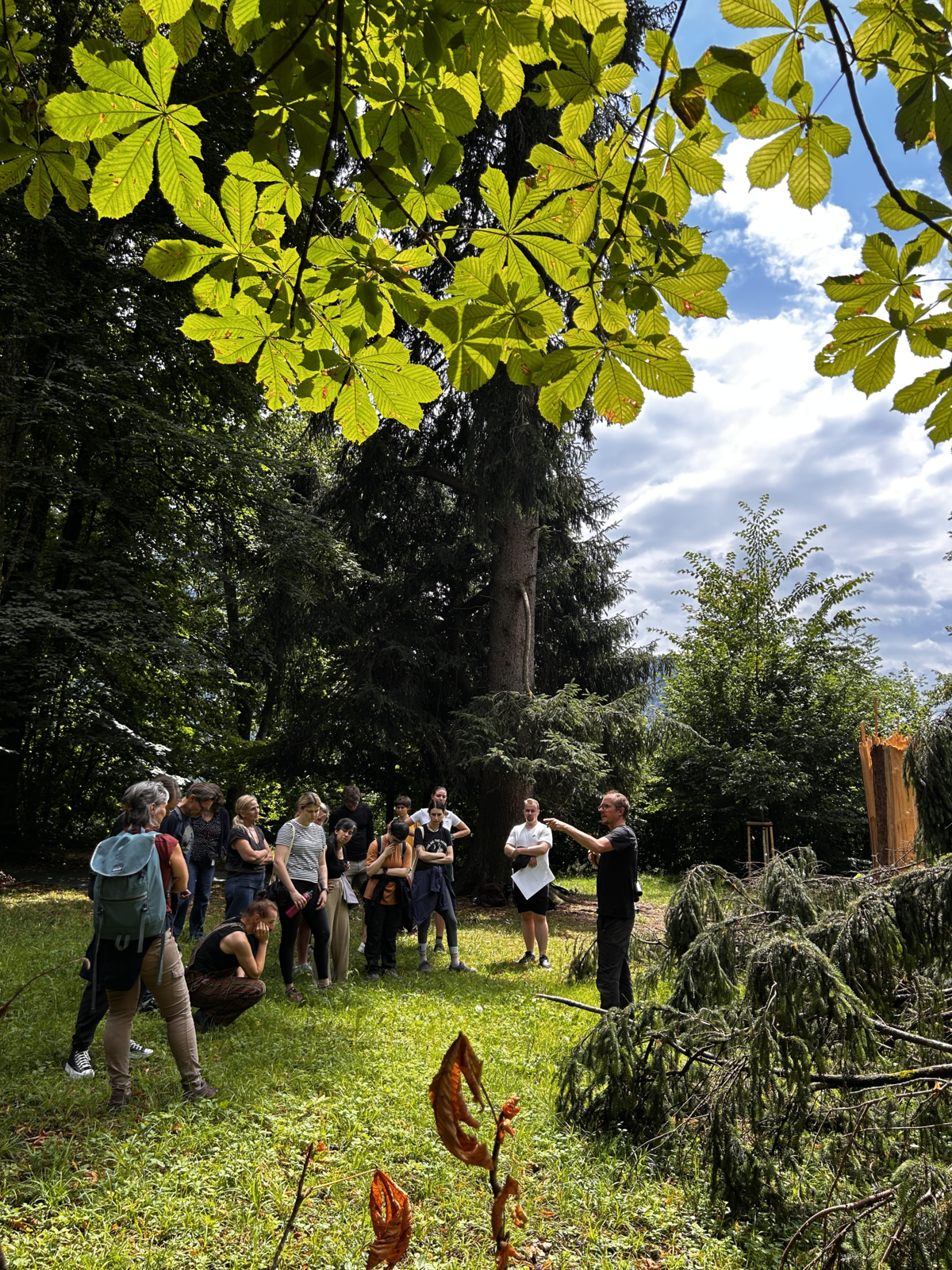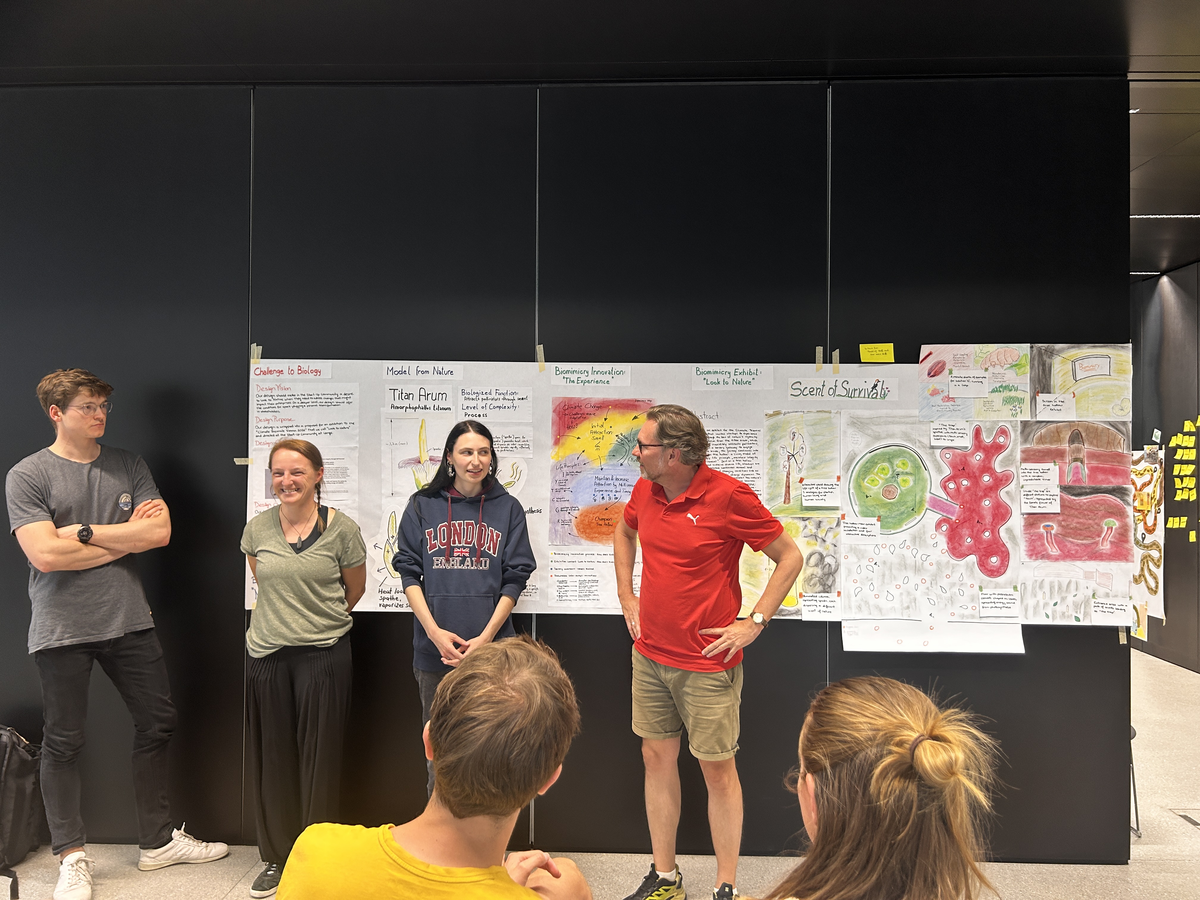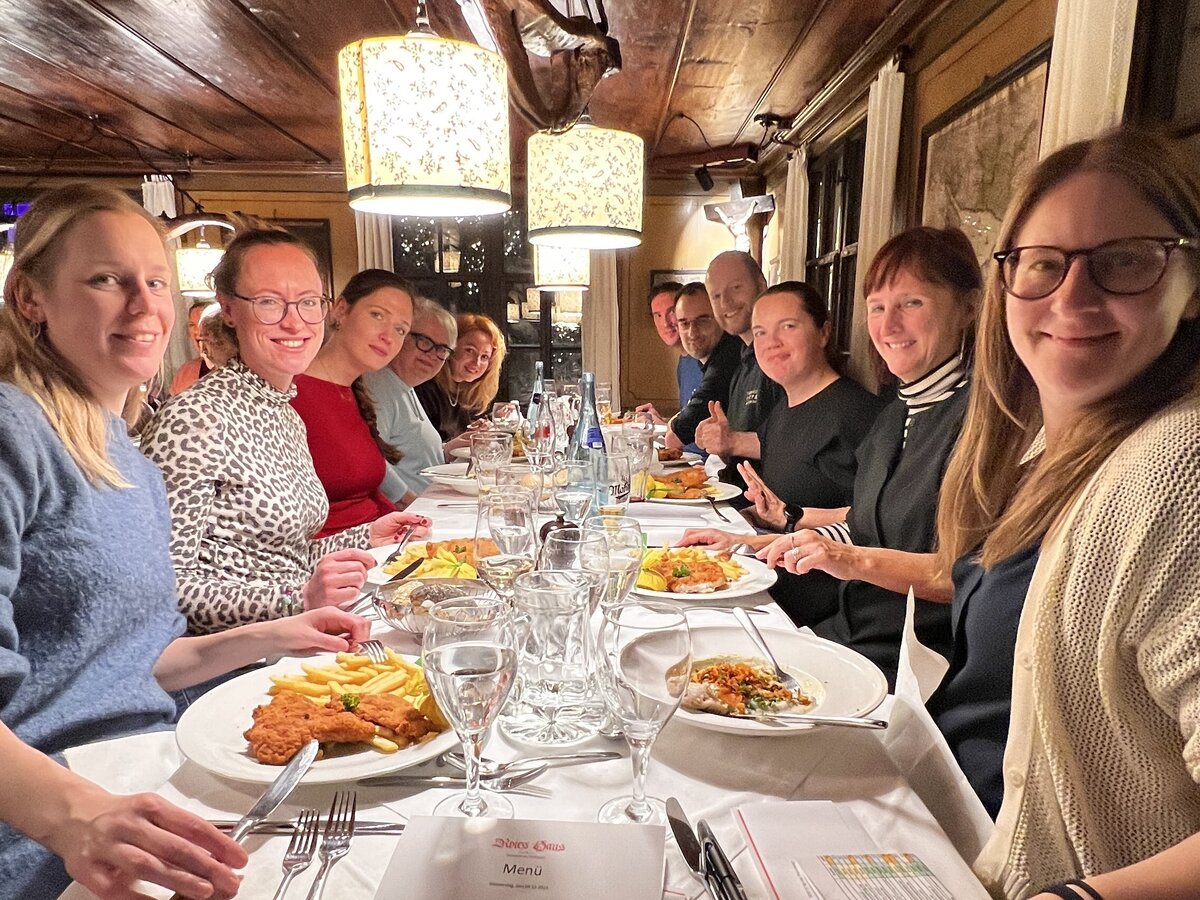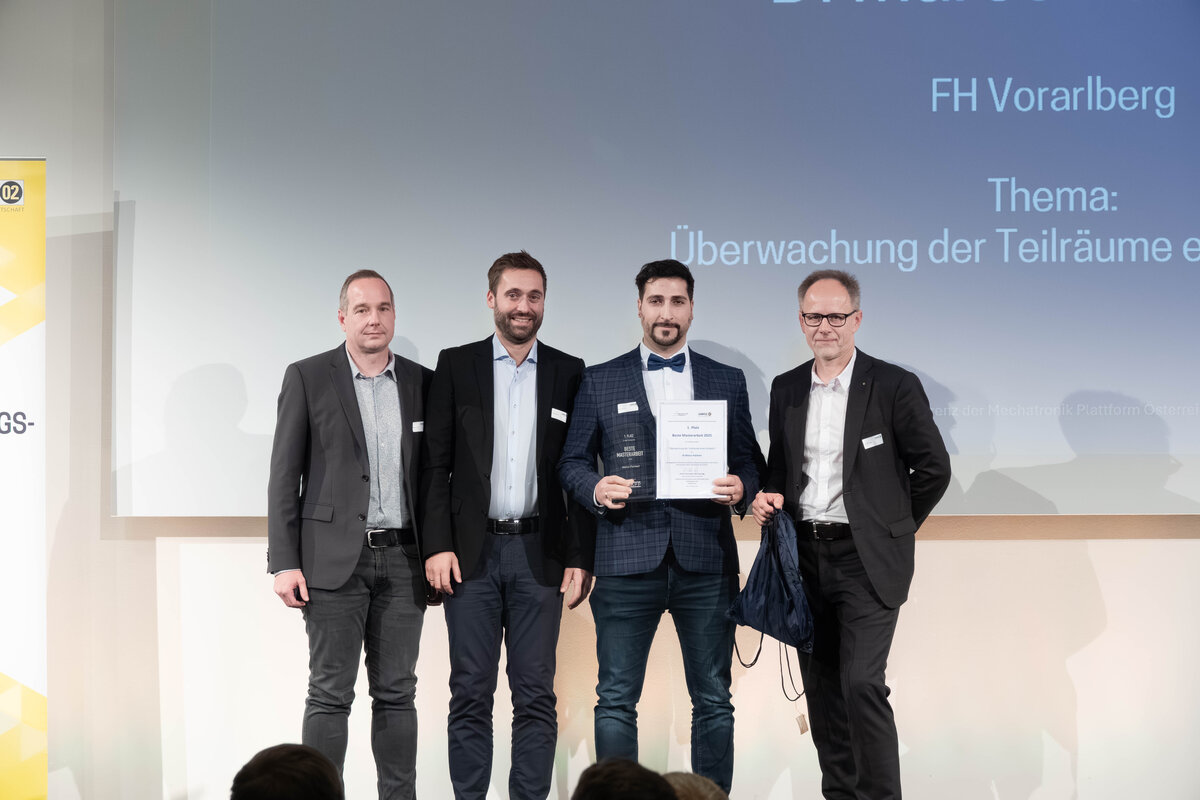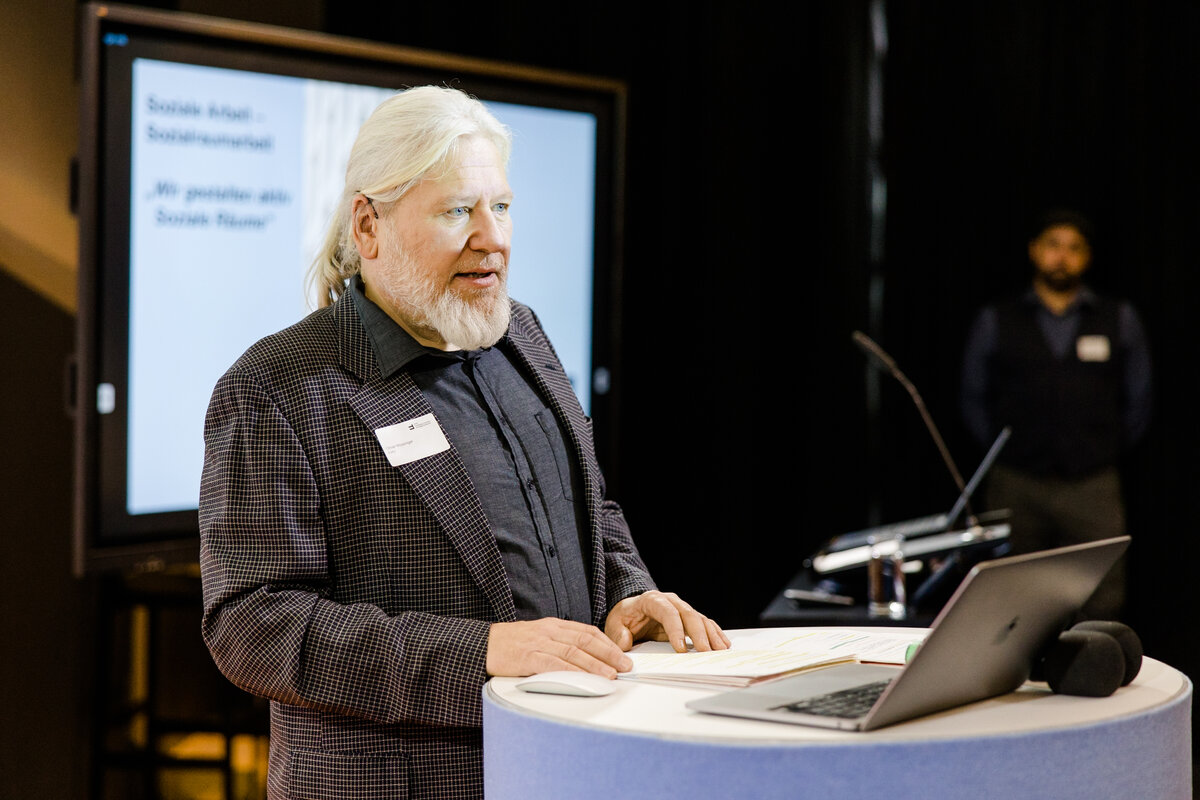Nature as inspiration
05.09.2025How does nature adapt to changing conditions? This question was the starting point for SOAK Biomimicry 2025, an international summer academy organized by the Alliance for Sustainable Universities. Students from all over Europe spent a week at the FHV this summer to work on ideas for the 2026 Climate Biennale. Their great inspiration: the nature of Vorarlberg. Because despite the most adverse circumstances, ecosystems always find new ways to grow and survive. Reason enough to take a closer look at nature as a model for innovation. With the aim of understanding the intelligence of nature, the students researched which principles can be transferred to a wide variety of areas in order to develop sustainable solutions.
From theory to experience
The programme was just as diverse as Vorarlberg's nature. To kick off the week, Margarita Köhl, Head of the Department of Design, gave a talk entitled "More-Than-Human Design", focusing on design perspectives that focus not only on people, but above all on the planet. With this mindset, it was time to head outside, because the brief was clear: how can we learn from nature? Lukas Rinnhofer, external lecturer at the FHV, nature guide and expert on local ecosystems, accompanied the excursions to Fohramoos, Bödele and inatura. In addition to excursions, field research and theoretical knowledge, there was plenty of room for creative design, exchange and shared experiences.<
Innovation through collaboration
In the spirit of biomimicry, the summer academy brought together students from different disciplines: Natural scientists, Engineering and Technology students and Design students worked together to understand natural processes and gain insights that serve as inspiration for innovative solutions. "Our aim was for the students to experience the biomimicry process for themselves in order to understand it and be able to apply it independently later on. The primary aim was therefore not to develop a finished product, but to make the process tangible. The fact that this resulted in wonderful exhibits that we would like to submit for the 2026 Climate Biennale is a nice side effect," explains Marilena Tumler, lecturer in the Department of Design at the FHV, who provided didactic support for the course.
Another important learning for the students was the influence that interdisciplinary collaboration has on innovation. The biomimicry process also shows this: Future, complex challenges can only be solved jointly from different disciplines in an interdisciplinary way. The participants were also able to experience what it feels like to be part of such a team - and how these teams can best be supported and guided.
For the students on the master's degree programme in Design and Creative Leadership who took part in the summer academy, interdisciplinary work is already part of everyday practice. Each year group is deliberately diverse. In this way, the students learn in their students learn to work together on a wide variety of projects - on the one hand by each contributing their own skills, and on the other by learning from each other.
Interdisciplinary and diverse
The week was marked by an intensive exchange between various disciplines. The well-coordinated SOAK team – led by biomimicry expert Regina Rowland from the University of Applied Sciences Burgenland, with Daniel Bayer from the Neusiedler See National Park acting as Scientist-at-the-Design-Table, who works as a nature educator in the fields of biodiversity and climate, lecturer Elisabeth Kopf from the University of Applied Arts Vienna, and Maria Haberny from the Academy of Fine Arts in Krakow – guided participants through an intensive learning journey spanning theory, field research, and design. The team was supported by colleagues from FHV: Margarita Köhl and Marilena Tumler from the Design department, Magdalena Burtscher-Rauter from the Engineering department, and Frauke Bieck, whose impeccable organisation and home-cooked meals contributed greatly to the group's collaborative spirit and sense of community. The programme was further enriched by conversations with regional stakeholders and start-ups, who brought in fresh, practice-based perspectives.
About the Sustainable University Alliance
Global challenges such as climate change, biodiversity loss, and resource scarcity demand collective action and a shift in values.
Higher education institutions bear a particular responsibility in this context. The COOP Sustainable Universities of Applied Sciences alliance is committed to promoting the implementation of the UN Sustainable Development Goals (SDGs) through teaching, research, university management, and collaboration. The alliance also works to raise awareness of sustainability among students, lecturers, staff, and external partners. The FHV is a founding member of this initiative.
